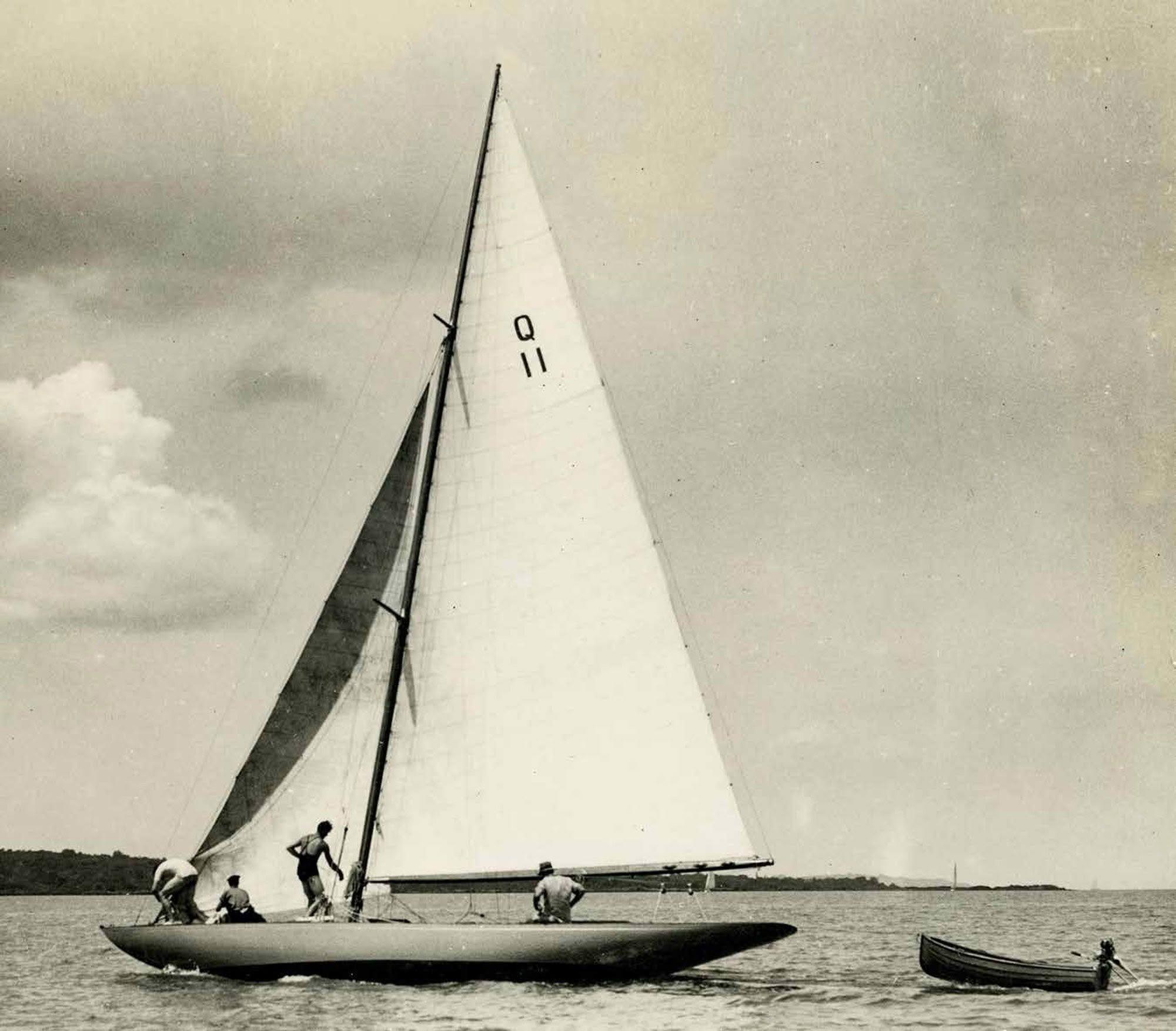

I left the Sanderson brothers in the winter of 1885. Frank put the half-decked centre-boarder Truant on the market. Fred had moved up to Totara North to help his ailing father Frank Sr with the general store and gum buying business he had recently bought there.
Frank eventually sold Truant to Parnell sporting allrounder John Lecky. He played rugby for Auckland, was a key man in the St. George’s Rowing Club’s racing whaleboats and was a renowned cyclist. The Auckland Star reported on November 13, 1886 on the yachts out on the harbour the previous weekend, “The half-deckers were noticeable…..the Manola showed the Mignonette, Welcome Jack, Pixie, Truant and a couple of others a clean pair of heels.”
Lecky entered Truant in the 1887 Auckland Anniversary Regatta in the “Fishing boats 4 tons and under race” against the invincible “yacht-finish” Manola and her near clone, genuine fishing boat Italy, Secret, Magic, Dixie (formerly the Open Boat Fraud), Penguin and Mignonette. Truant got a creditable third from Manola and Italy.

Although neither Manola and Truant were used in the fishing industry, and that was to cause tension about Manola in future, the New Zealand Herald of January 31, 1887 had prescient comments about this race showing that the writer was aware that he was observing the crucible in which the later mullet boat type was forming. (see SIDEBAR)
John Lecky entered Truant in the Judge’s Bay Regatta “Half-decked Sailing Boats” race in late February 1887. In light winds Lind and Duder’s new 24ft Bailey-built Manola-clone Cloud won convincingly from Manola and the new 24ft Robert Logan Manola-copy Isca. A fortnight later Truant was stuck in St. George’s Bay at low water and Lecky could not get her off in time to enter a race. On April 2, 1887 she was 17th in the procession of 24 yachts taking part in a display on the harbour by the Auckland Yacht Club. Truant was already up for sale and sold in early December 1887 to 19-year-old Hubert Hammond of Grafton Road.
For his first cruise in Truant, Hammond and five friends set off from St. George’s Bay on Boxing Day 1887 at 7am, heading for Matakana. The wind was fresh and it was rough in the Rangitoto Channel. About noon, when they were three miles off Toroa (then Gull) Point, the helmsman luffed up in a heavy squall; the sheeted headsails went aback. Truant rolled to leeward and quickly filled through her open cockpit. With her ballast of a ton and half of pig iron and provisions for ten days she sank rapidly by the stern. Her dinghy was lashed on and went down with her. The six young men struck out for the shore, but only two strong swimmers made it.


It is hard, all these years on, not to be moved by the Victorian newspaper reports. Even at a time when death at sea was commonplace, the loss of Truant and the drowning of four fine young lads was an Auckland tragedy. The four bodies were recovered eventually, from Motutapu and Rangitoto, while one side of the hull washed up at Whangaparaoa in January 1890 after washing along the bottom of the Channel for two years.
Going back to the Sanderson brothers, their father Frank Sr had died in January 1887. Fred continued running his father’s business at Totara North. For 40 years he was agent for the Northern Steamship Company which ran a regular service to Auckland with the steamer Clansman. He was also secretary and accountant to the Totara North shipbuilders and timber millers T.M. Lane & Sons.
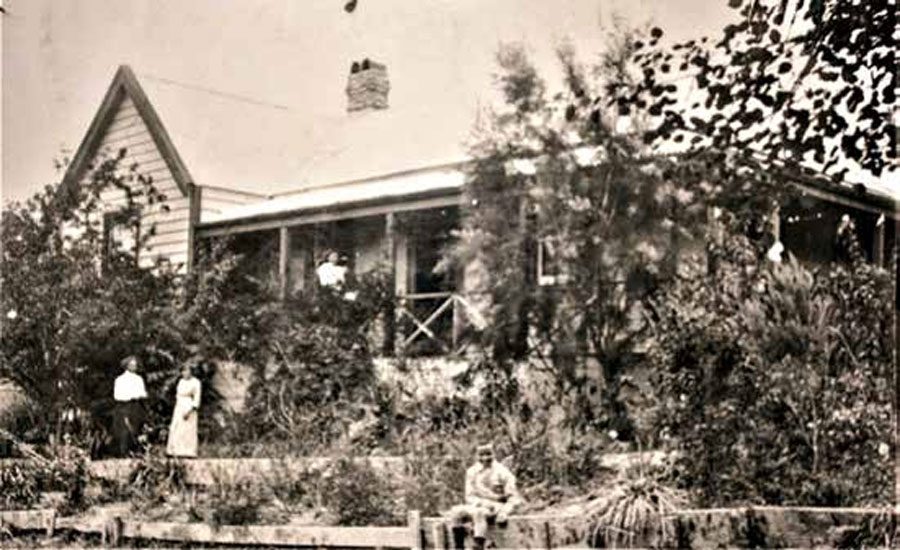
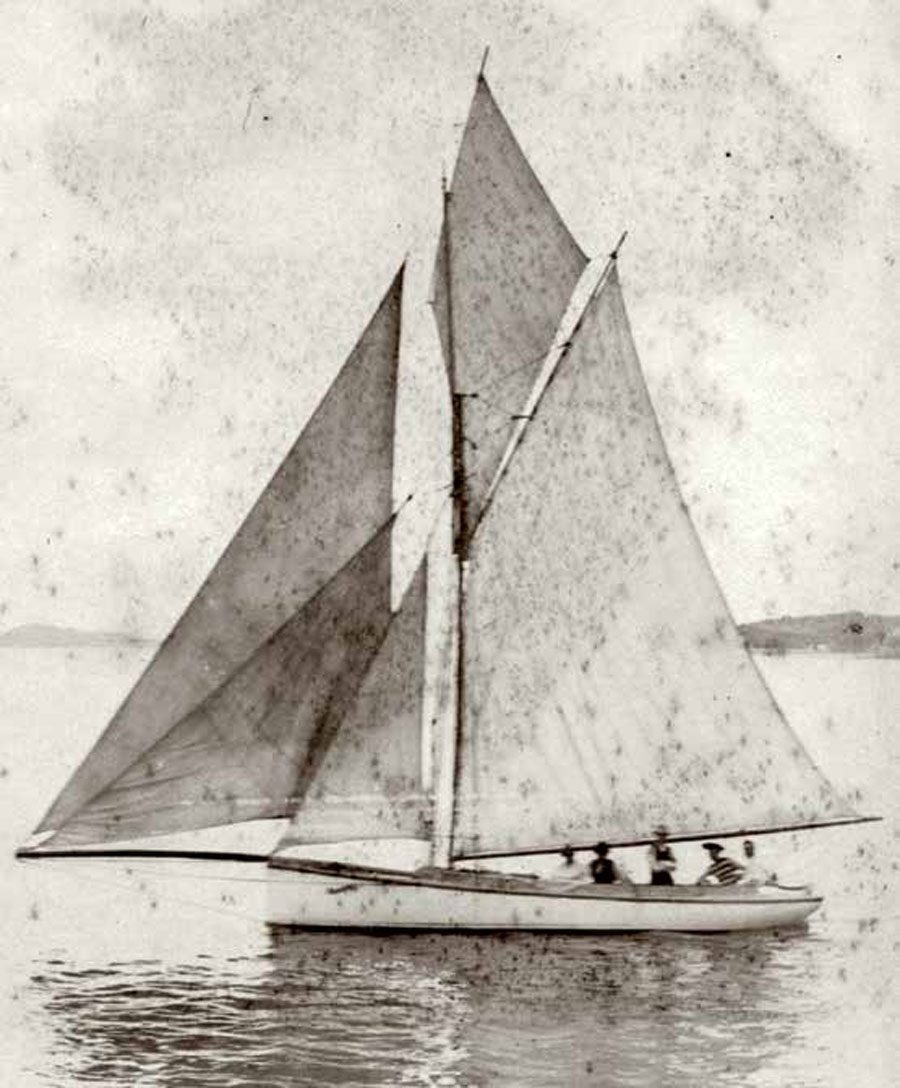
Back in Auckland, Frank was rising through the ranks at L. D. Nathan & Co. At the exact time of the Truant tragedy, December 1887, he was in the process of buying another yacht, Tuna, a small yacht, probably only 25ft loa, built in late 1884 by Robert Logan for solicitor Arch Buchanan. She had done very little racing, just one appearance in the 1885 Anniversary Regatta where she was outclassed. Buchanan then had a bigger yacht, Ariel, built by Robert Logan as a clone of Jessie Logan.
Frank renamed Tuna Alert and gave her a new suit of sails in November 1888. Now a Committee Member of the Auckland Yacht Club, Frank was instrumental, along with Arch Buchanan, in promoting a new class of yacht, the “three-tonners” which slotted under the four-tonners now totally dominated by the 24ft protomullet boat types like Manola and Italy and got away from the AYC’s ban of ‘professionals’ (read ‘fishermen’) racing in their events. Frank’s old rival Sybil slotted into this class comfortably.
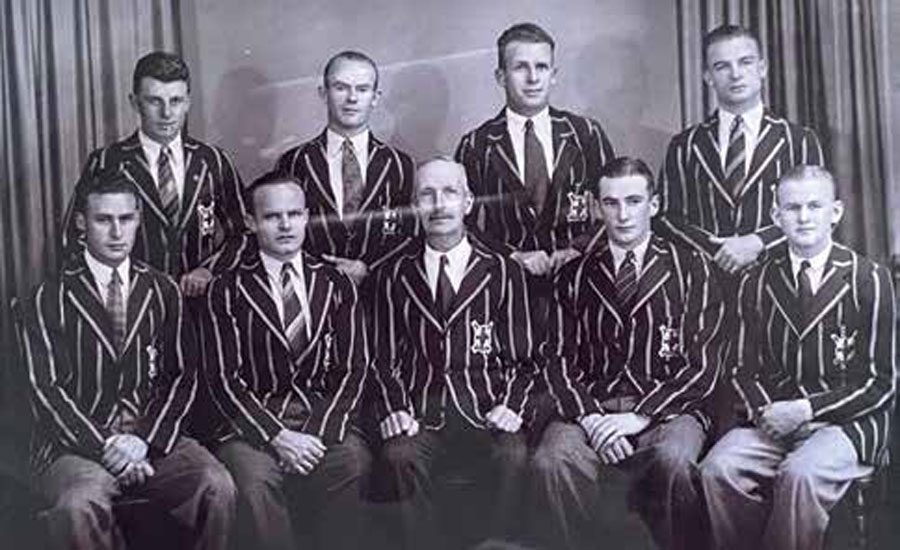
In February 1889 the AYC followed up by holding a sweepstake race for three-tonners. Alert came second to ‘Jockey’ Breen’s Corea, with Sybil third. Frank entered the Judge’s Bay Regatta on April 24 but was again beaten by Corea for first place. In a letter to his brother Fred on April 29, 1889 Frank had this to say, “On Saturday morning Charles and I took out a party in the Alert and had a very pleasant sail – the weather being nice and light. Walter Jones was out in the Jessie Logan & took a photo of us….” That photograph still exists in bad shape and a copy is in this article.
Frank got married in October 1889 and sold Alert to W. Hewson. She disappears from the record at that point, possibly with a name change, but there was a batch of new yachts coming through, and Hewson may have bought her as a cruiser.
Years later Frank had a launch built by Logan Bros, another Alert, a 32-footer with a 10hp Standard engine, launched in October 1909, one of the last vessels produced by Logan Bros before they closed their business.

Fred Sanderson remained in Totara North for the rest of his life. On July 11, 1888 he married Caroline Russell Stephenson, the eleventh child of the late Capt. Samuel Stephenson of Russell and Ada Charlotte Macauliffe, the daughter of Capt. Macauliffe, an American whaler captain murdered by locals in 1834 at Pingelap in Micronesia and Ehaku, a Maori wife. Sam Stephenson’s descendants include Pamela Stephenson (the better half of Billy Connolly). Fred and Carrie lived in a comfortable home at the end of Otawhiri Point and raised four children. Fred died in 1932.
Frank Sanderson married Scottish-born Elizabeth Anderson Bews in 1889 and had one surviving daughter. He came to control the shipping department of L. D. Nathans and kept up his involvement in aquatic sports for the rest of his life. He was on the Committee of the Auckland Regatta Club and the Judge’s Bay Regatta Club for many years and was Commodore of St. George’s Rowing Club for some years from 1934. In 1933, H. W. Hudson, the then Commodore built a whaleboat, a replica of the whaleboats raced keenly all around the country in the 1880s and 1890s, and presented it to the Club on its Golden Jubilee. Frank survived until 1951.
The Sanderson family still flourishes in the North with strong connections to maritime matters and links to the Lane family, of which more later. BNZ
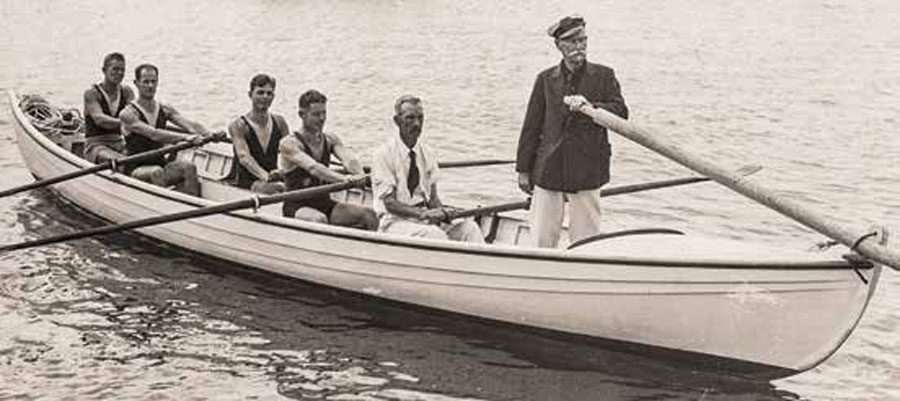
THE NEW ZEALAND HERALD ON THE 1887 AUCKLAND ANNIVERSARY REGATTA
“Of the sailing events this was the one that created the greatest amount of interest, from the fact that all the boats were known to have a say in the matter, and from their sailing abilities it was a most difficult task to select the best boat. It was evident from the manner in which the boats were brought to the starting post that great care had been taken in getting the different boats ready and fit for the task. At all times great interest is taken in this race, and as the boats that compete are a most useful class, being engaged in the mullet fishing trade, and consequently provide employment not only afloat but more so on shore to a large number of people, the race deserves far better consideration at the hands of the Regatta Club than has been shown to them for some time past. None of the owners are men of any great amount of means, but to get their boats ready for the regatta they will not begrudge a few pounds, and they always all sail faithfully for the prize and consequently always provide a race of such excitement that were it dropped from the programme it would be greatly missed. We trust in future regattas to see the race more deservedly encouraged, and there is no doubt if it is that double the entries of last Saturday will be the result.”
This statement foreshadows the rise of the class of yacht unique to the Waitemata which, within 15 years, was giving the best racing, the mullet boat.

